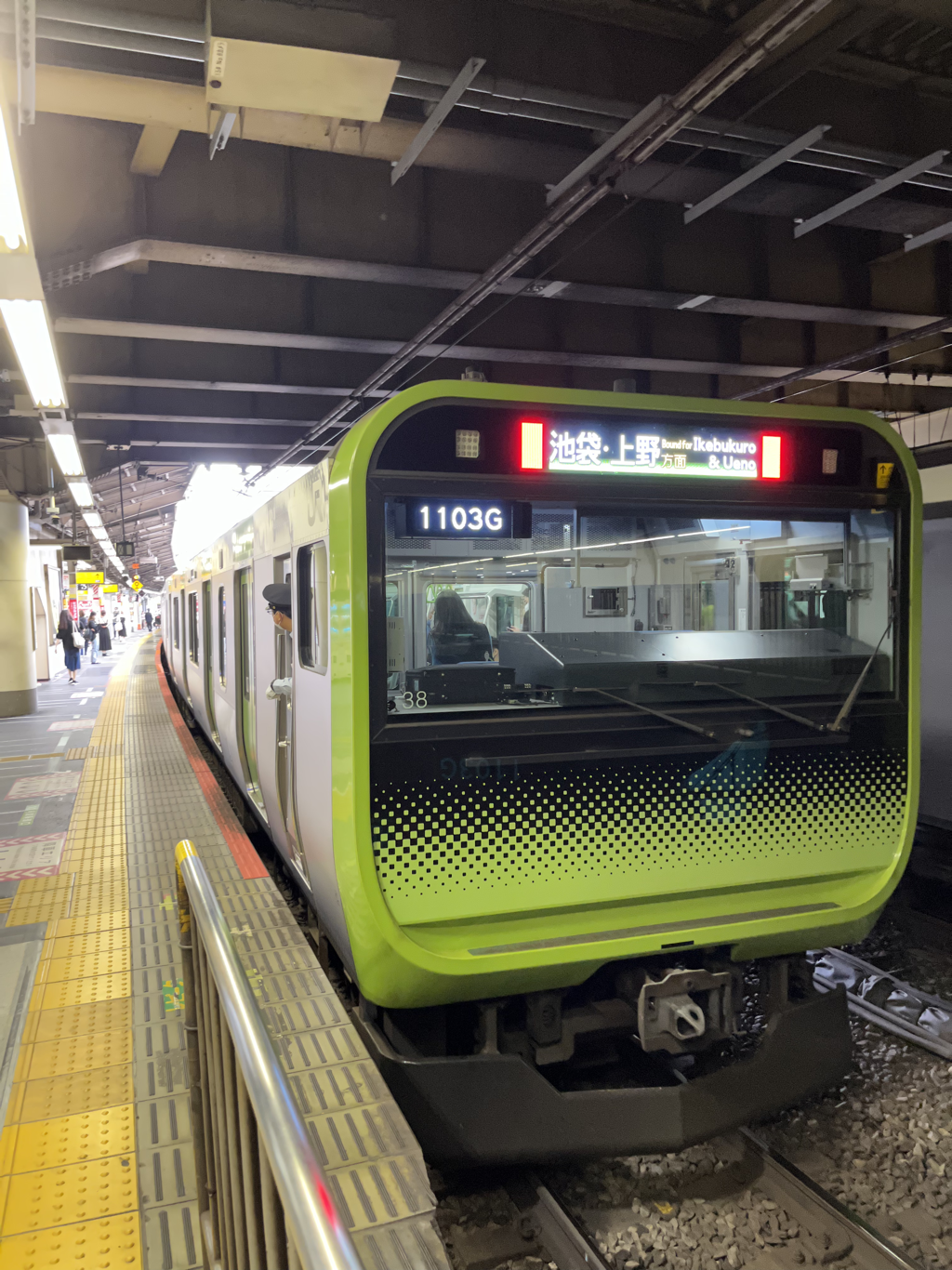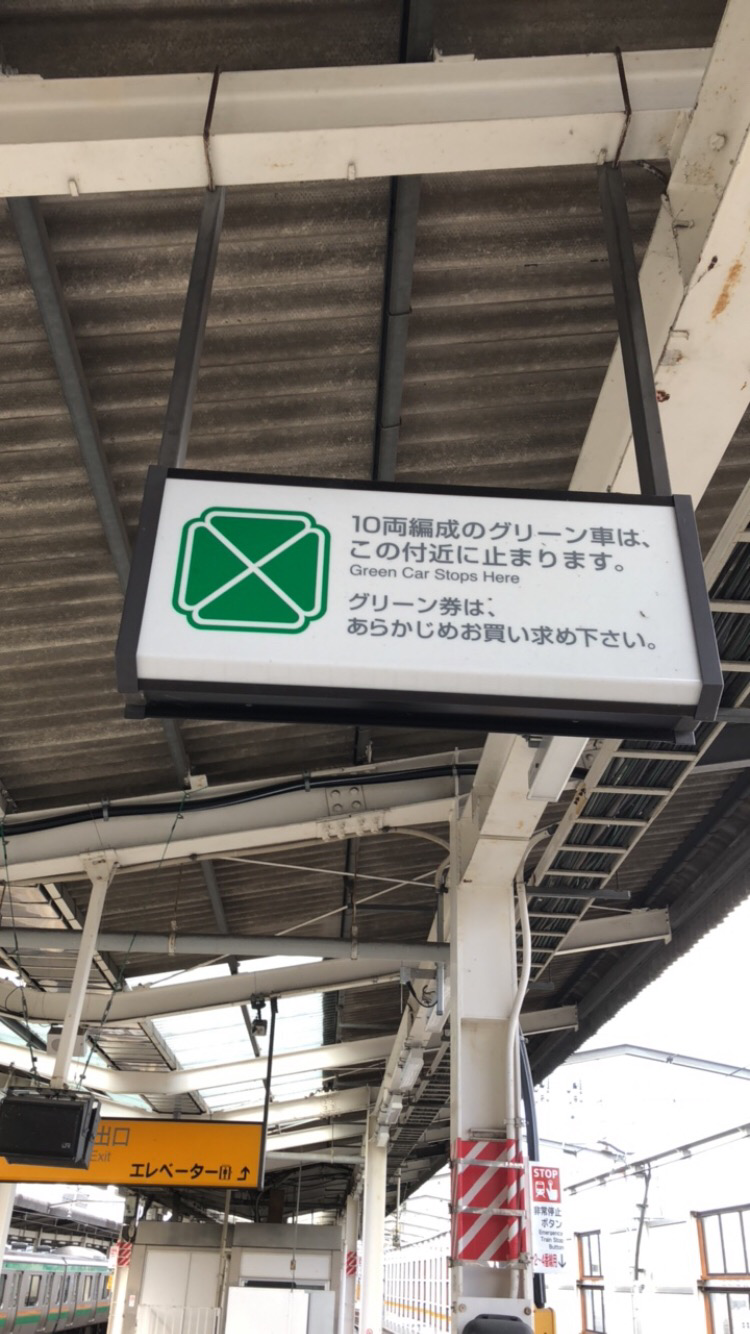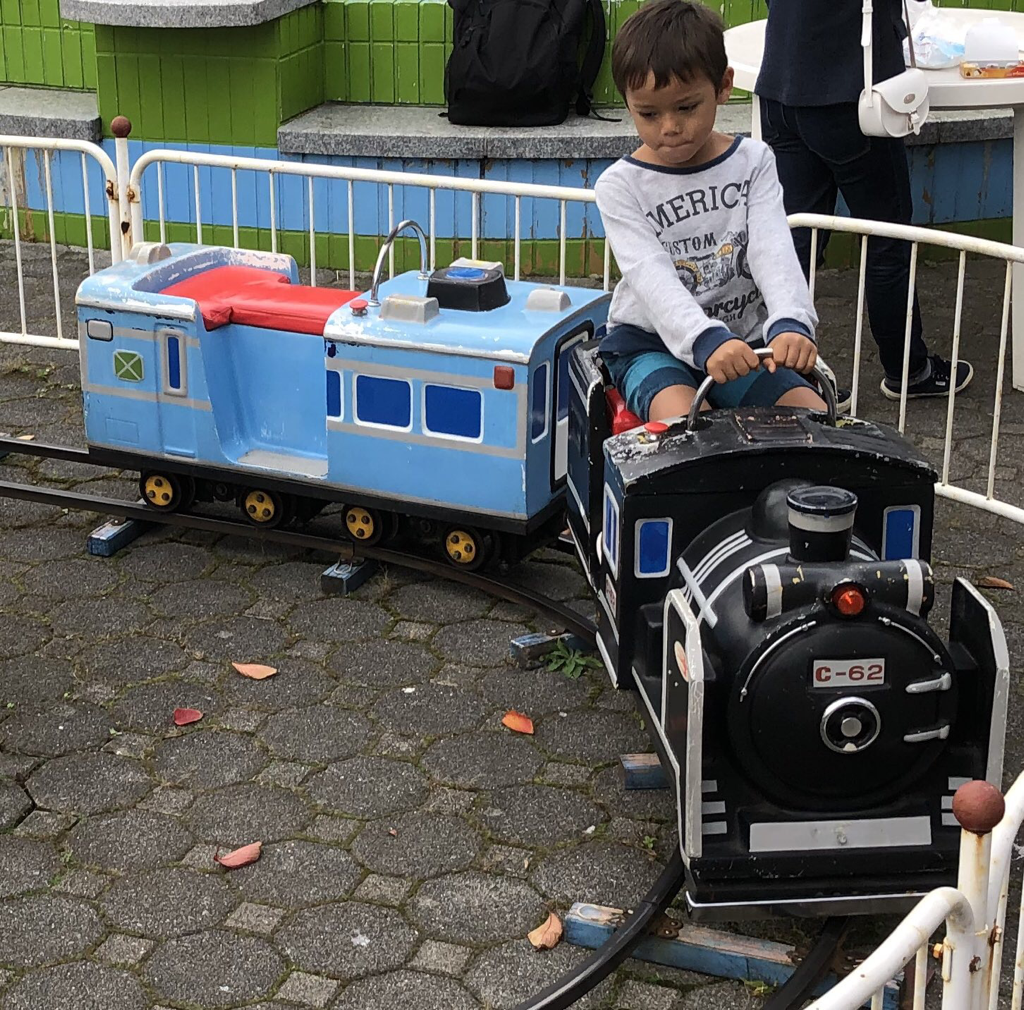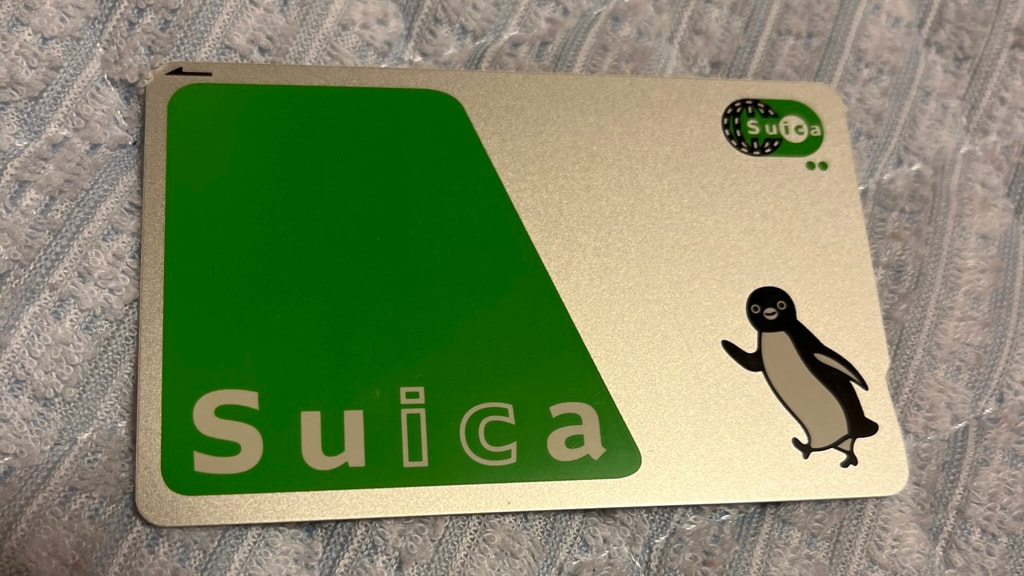Taking The Train In Tokyo
The best way to get around in Tokyo is to take the train. It may seem daunting at first, but I have collected a few answers to common questions to help you.
Q: What is the Yamanote line?
A: The Yamanote line is a ring line through the stations around Tokyo city center. There are two trains which run clockwise and anticlockwise, and it takes about an hour to go round. The trains usuallu use the same platform, so you can change direction. The diameter of the ring is about 12 kilometers.
A: The Yamanote line is a ring line through the stations around Tokyo city center. There are two trains which run clockwise and anticlockwise, and it takes about an hour to go round. The trains usuallu use the same platform, so you can change direction. The diameter of the ring is about 12 kilometers.
Q: How much does the train cost?
A: This depends on how many stations you are passing. The price between two stations is 136 yen.
Q: How long time does the train take?
A: This also depends on the number of stations you are passing, but also the distance between the stations. Typically it takes any time between two and eight minutes.
Q: How do I know when the train is coming? A: The display on the platform shows where the next couple of trains are in relation to the current station. You can decide where to wait for the train (there are usually more seats on the rear side of the “green cars”, the first-class cars with reserved seats (except on the Yamanote line, there are no green cars).
A: This depends on how many stations you are passing. The price between two stations is 136 yen.
Q: How long time does the train take?
A: This also depends on the number of stations you are passing, but also the distance between the stations. Typically it takes any time between two and eight minutes.
Q: How do I know when the train is coming? A: The display on the platform shows where the next couple of trains are in relation to the current station. You can decide where to wait for the train (there are usually more seats on the rear side of the “green cars”, the first-class cars with reserved seats (except on the Yamanote line, there are no green cars).
Q: Are there faster alternatives?
A: Not really. Even if you could walk between some stations, it is hard to beat the train for speed.
Q: How do I find out which train to take between two places?
A: In every station, usually next to the ticket counters and close to the entrance gates, there is a big board with a stylized map of the Tokyo JR train system, with the Yamanote line as a big ring in the rough middle. Private train lines have their own boards, as does the Tokyo Metro subway. You need to be able to read the name of your destination in Japanese, but then it is easy to figure out. You can also ask in the ticket office or in the manned gate. Chances are the staff there speaks at least a few words of English. Or you could use a navigation application. Google Maps is pretty good and gives the time and price between stations. Navitime is a local Japanese application which might work even better. It is not as good as Google Maps to handle transcription errors, but even Google Maps can miss unless you put in the name in Japanese.
Q: What time is best to take the train?
A: The best time is between 10 AM and 7 PM. In the early morning there is a rush hour, somewhat weakened by the work-at-home wave following the pandemic, which makes taking the train very difficult. In the evening, trains are much less crowded.
A: Not really. Even if you could walk between some stations, it is hard to beat the train for speed.
Q: How do I find out which train to take between two places?
A: In every station, usually next to the ticket counters and close to the entrance gates, there is a big board with a stylized map of the Tokyo JR train system, with the Yamanote line as a big ring in the rough middle. Private train lines have their own boards, as does the Tokyo Metro subway. You need to be able to read the name of your destination in Japanese, but then it is easy to figure out. You can also ask in the ticket office or in the manned gate. Chances are the staff there speaks at least a few words of English. Or you could use a navigation application. Google Maps is pretty good and gives the time and price between stations. Navitime is a local Japanese application which might work even better. It is not as good as Google Maps to handle transcription errors, but even Google Maps can miss unless you put in the name in Japanese.
Q: What time is best to take the train?
A: The best time is between 10 AM and 7 PM. In the early morning there is a rush hour, somewhat weakened by the work-at-home wave following the pandemic, which makes taking the train very difficult. In the evening, trains are much less crowded.
Q: Does everyone get a seat on the trains?
A: No, the trains have limited seating. Most passengers are intended to stand.
Q: What are ”silver seats”?
A: There is a section of seats at the end of each trains reserved for those with disabilities, the elderly, and parents with small children. During rush hour, those seats will be full and those seated will (pretend to) be asleep, so they do not have to give up their seats. Typically people do give up their seats for elderly and people with small children.
Q: Is there any way to reserve seats?A: Not on the Yamanote line, but on the commuter trains coming into Tokyo. In first class, you can reserve a seat when you pay the additional ticket.
Q: How do you pay for your tickets?A: You can buy tickets just before your trip in two places: The automatic ticket vending machines with bideo screens (there are several outside the entrances to any station) and the ticket counters. The ticket counters have much shorter opening times than the stations themselves, and staff may or may not speak English; whereas there always is a button to select English menues on the vending machines.
If you are going to go the same route for several times during a month, you can get a commuter ticket. It is a lot of bother if you are just a tourist.
The second thing to remember is even more important: Kids under 6 travel free; and kids under 12 travel half price. You need special tickets to make use of this. Or you can get a schoolchildrens Suica card, which automatically charges half price rather than full price. This will however require proof of age (passport is probably enough), and that you speak Japanese so you can explain what you need.
A: No, the trains have limited seating. Most passengers are intended to stand.
Q: What are ”silver seats”?
A: There is a section of seats at the end of each trains reserved for those with disabilities, the elderly, and parents with small children. During rush hour, those seats will be full and those seated will (pretend to) be asleep, so they do not have to give up their seats. Typically people do give up their seats for elderly and people with small children.
Q: Is there any way to reserve seats?A: Not on the Yamanote line, but on the commuter trains coming into Tokyo. In first class, you can reserve a seat when you pay the additional ticket.
Q: How do you pay for your tickets?A: You can buy tickets just before your trip in two places: The automatic ticket vending machines with bideo screens (there are several outside the entrances to any station) and the ticket counters. The ticket counters have much shorter opening times than the stations themselves, and staff may or may not speak English; whereas there always is a button to select English menues on the vending machines.
If you are going to go the same route for several times during a month, you can get a commuter ticket. It is a lot of bother if you are just a tourist.
The second thing to remember is even more important: Kids under 6 travel free; and kids under 12 travel half price. You need special tickets to make use of this. Or you can get a schoolchildrens Suica card, which automatically charges half price rather than full price. This will however require proof of age (passport is probably enough), and that you speak Japanese so you can explain what you need.
Q: What is a Suica card, and where can I get it?
A: Suica is a stored-value card which you charge in the station vending machines. Make sure to keep enough balance in your card to take you past the station where you want to exit, or keep enough cash to top up the card (which you can do in the fare adjustment machine before the ticket gate).
You can use the Suica card to pay for small purchases instead of cash, both in the stores inside the stations and in other stores (especially convenience stores) outside. Vending machines inside the stations do take Suica cards but not outside.
Q: Can we use our Japan Rail Passes on the trains in Tokyo?
A: Yes, you can use it on the Japan Railways trains (which include the Yamanote line) and the Tokyo Monorail (which is run by JR).
A: Suica is a stored-value card which you charge in the station vending machines. Make sure to keep enough balance in your card to take you past the station where you want to exit, or keep enough cash to top up the card (which you can do in the fare adjustment machine before the ticket gate).
You can use the Suica card to pay for small purchases instead of cash, both in the stores inside the stations and in other stores (especially convenience stores) outside. Vending machines inside the stations do take Suica cards but not outside.
Q: Can we use our Japan Rail Passes on the trains in Tokyo?
A: Yes, you can use it on the Japan Railways trains (which include the Yamanote line) and the Tokyo Monorail (which is run by JR).
Q: Can I use my mobile phone on the train?
A: Only if you do not make any noise. Talking is not allowed, as is noise leaking from your earphones. Alert messages and alarms are also strongly discouraged. Watching the screen, sending and receiving messages are not a problem, although the train companies caution against bumping into other passengers while watching your smartphone - something which might inconvenience them. And force you to apologise.
Q: What are the rules for traveling on the trains?
A:There are rules posted on the stations and in the trains, but you have to be observant - they may not all be posted in one place. Before the pandemic, rules were posted in English and several other languages, Basically, the rules are not to eat on the train, not to make loud noises, not bring lots of luggage or carry it in a way where it is in the way of others, and generally be considerate of your fellow passengers.
A: Only if you do not make any noise. Talking is not allowed, as is noise leaking from your earphones. Alert messages and alarms are also strongly discouraged. Watching the screen, sending and receiving messages are not a problem, although the train companies caution against bumping into other passengers while watching your smartphone - something which might inconvenience them. And force you to apologise.
Q: What are the rules for traveling on the trains?
A:There are rules posted on the stations and in the trains, but you have to be observant - they may not all be posted in one place. Before the pandemic, rules were posted in English and several other languages, Basically, the rules are not to eat on the train, not to make loud noises, not bring lots of luggage or carry it in a way where it is in the way of others, and generally be considerate of your fellow passengers.
Q: I have seen films of people pushing in customers into the trains when arms and legs stick out. Are they really that greedy?
A: Passengers during rush hour push themselves onto the trains, so everyone can get to their destination on time. Then the station attendants try to push in their arms, legs, and briefcases so the train can depart on time.
Q: Is there any type of weather when the trains are more crowded?
A:Yes. When it is raining, the trains always become more crowded, and not only that, people have wet umbrellas which may spill water on other passengers, unless tightly folded. So that is your rainy day train rule: When it rains, make sure your umbrellas are tightly folded and do not wave them around.
A: Passengers during rush hour push themselves onto the trains, so everyone can get to their destination on time. Then the station attendants try to push in their arms, legs, and briefcases so the train can depart on time.
Q: Is there any type of weather when the trains are more crowded?
A:Yes. When it is raining, the trains always become more crowded, and not only that, people have wet umbrellas which may spill water on other passengers, unless tightly folded. So that is your rainy day train rule: When it rains, make sure your umbrellas are tightly folded and do not wave them around.
Q: Is the air conditioning always this strong, or is there a way to avoid it?
A: Before the current energy price crisis, Japanese air conditioning units - including on the trains - appeared to have two settings: Very hot (in winter) and very cold (in summer). Female office workers, not protected from the cold by woolen suits, often brought blankets to wrap themselves in, the office air was so cold. As energy got more expensive temperatures started creeping upward respective downward. Already before this, the trains started featuring weak (弱い) air conditioning in some train cars. The air is no warmer but the airflow is much weaker. ,
A: Before the current energy price crisis, Japanese air conditioning units - including on the trains - appeared to have two settings: Very hot (in winter) and very cold (in summer). Female office workers, not protected from the cold by woolen suits, often brought blankets to wrap themselves in, the office air was so cold. As energy got more expensive temperatures started creeping upward respective downward. Already before this, the trains started featuring weak (弱い) air conditioning in some train cars. The air is no warmer but the airflow is much weaker. ,
Q: We just want to see the Shinkansen train. How can we do that?
A: if you just want to see the train from the outside, and do not care about the inside, you can get a platform ticket. In Japanese, this is “nyuujouken (入場券) and the normal price is 140 yen, half for children up to 12, and free for children under 6. You can either get it at the ticket gate entrance to the Shinkansen from the outside, or in the fare adjustment machine inside the regular ticket gates but outside the Shinkansen gates. The tickets you get at the outside entrance are the classic, brown stiff-cardboard tickets. The ticket is valid for two hours.
A: if you just want to see the train from the outside, and do not care about the inside, you can get a platform ticket. In Japanese, this is “nyuujouken (入場券) and the normal price is 140 yen, half for children up to 12, and free for children under 6. You can either get it at the ticket gate entrance to the Shinkansen from the outside, or in the fare adjustment machine inside the regular ticket gates but outside the Shinkansen gates. The tickets you get at the outside entrance are the classic, brown stiff-cardboard tickets. The ticket is valid for two hours.
Feel free to ask additional questions, and I will answer as best as I am able. I will continue to add relevant questions here.
Oh and by the way, welcome to Tokyo!
Oh and by the way, welcome to Tokyo!




